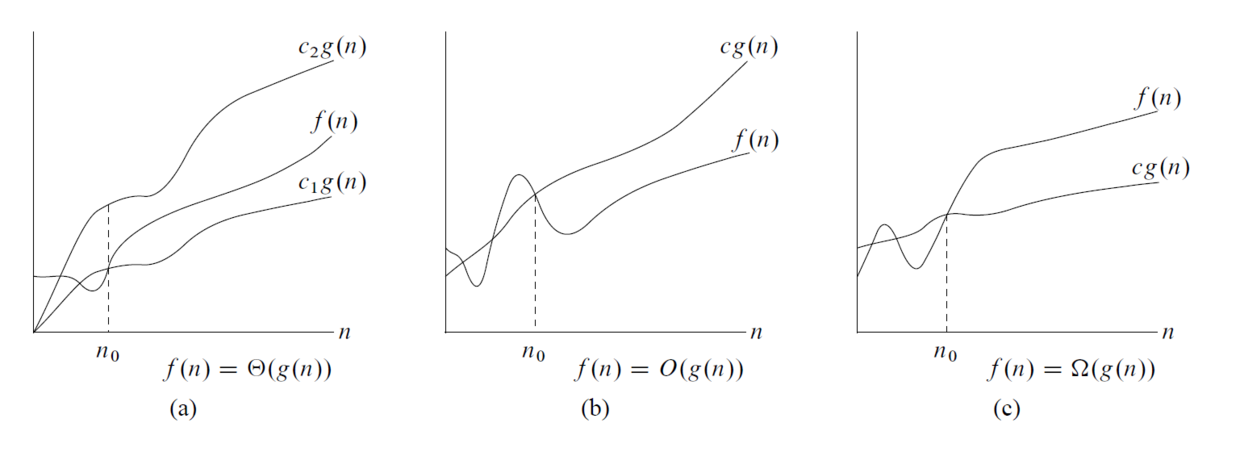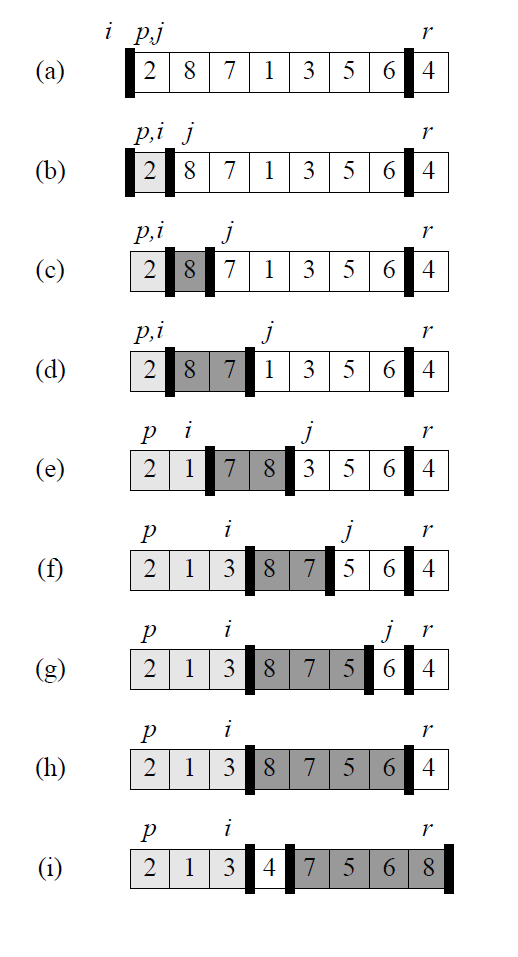- Published on
算法导论 Introduction to Algorithms
- Authors

- Name
- ZHOU Bin
- @bzhouxyz
一、基础 Foundations
1.1 介绍
简单介绍何为算法,它能解决什么样的问题,介绍NP完全问题。
1.2 算法复杂度
二、基本算法 Basic Algorithms
2.1 Insert Sort
def insert_sort(A, reverse=False):
for j in range(1, len(A)):
key = A[j]
i = j - 1
# Insert A[j] to sorted sequence of A[:j]
if reverse:
while i >= 0 and A[i] < key:
A[i+1] = A[i]
i -= 1
else:
while i >= 0 and A[i] > key:
A[i+1] = A[i]
i -= 1
A[i+1] = key
return A
2.3 Merge Sort
def merge(A, p, q, r):
L = A[p:q] + [float('inf')]
R = A[q:r] + [float('inf')]
i, j = 0, 0
for k in range(p, r):
if L[i] <= R[j]:
A[k] = L[i]
i += 1
else:
A[k] = R[j]
j += 1
def merge_sort(A, p, r):
if p < r:
q = int((p + r) / 2)
if q == p:
merge(A, p, p+1, r+1)
else:
merge_sort(A, p, q)
merge_sort(A, q, r)
merge(A, p, q, r)
return A
三、算法复杂度 Algorithm Complexity

We say an algorithm's complexity is means:
There exists such that running time of the algorithm is below when
四、分而治之 Divide and Conquer
4.1 Find maximum subarray
An array has subarrays, find the maximum sum of all the subarrays.
def find_maximum_cross_subarray(A, low, mid, high):
left_sum = - float('inf')
sum_ = 0
for i in range(mid, low-1, -1):
sum_ += A[i]
if sum_ > left_sum:
left_sum = sum_
max_left = i
right_sum = - float('inf')
sum_ = 0
for j in range(mid+1, high+1):
sum_ += A[j]
if sum_ > right_sum:
right_sum = sum_
max_right = j
return max_left, max_right, left_sum + right_sum
def find_maximum_subarray(A, low, high):
if high == low:
return low, high, A[low]
else:
mid = (low + high) // 2
left_low, left_high, left_sum = find_maximum_subarray(A, low, mid)
right_low, right_high, right_sum = find_maximum_subarray(A, mid+1, high)
cross_low, cross_high, cross_sum = find_maximum_cross_subarray(A, low, mid, high)
if left_sum >= right_sum and left_sum >= cross_sum:
return left_low, left_high, left_sum
elif right_sum >= left_sum and right_sum >= cross_sum:
return right_low, right_high, right_sum
else:
return cross_low, cross_high, cross_sum
六、堆排序 Heap Sort
Heap (tree) has following properties:
- Parent of node is node
- Right child of node is node
- Left child of node is node
A max-heap is such that the value of node ii is smaller than its parent node's value.
def max_heapify(A, i, till):
l = 2*i
r = 2*i + 1
if l < till and A[l] < A[i]:
largest = l
else:
largest = i
if r < till and A[r] < A[largest]:
largest = r
if largest != i:
A[i], A[largest] = A[largest], A[i]
max_heapify(A, largest, till)
return A
def heap_sort(A):
for i in range(len(A) // 2, -1, -1):
max_heapify(A, i, len(A))
print(A)
for i in range(len(A)-1, 0, -1):
A[0], A[i] = A[i], A[0]
A = max_heapify(A, 0, i)
return A
七、快排序 Quick Sort

def partition(A, p, r):
x = A[r]
i = p - 1
for j in range(p, r):
if A[j] <= x:
i += 1
A[i], A[j] = A[j], A[i]
A[i+1], A[r] = A[r], A[i+1]
return i+1
def quick_sort(A, p, r):
if p < r:
q = partition(A, p, r)
print(p, q, r, A)
quick_sort(A, p, q-1)
quick_sort(A, q+1, r)
十、数据结构 Data Structure
- Queue: First In First Out
- Stack: First In Last Out
- LinkedList:

十一、哈希表 Hash Table

十二、二叉树 Binary Tree
Let be a node in a binary search tree. If is a node in the left subtree of , then ; if is a node in the right subtree of , then
class Node:
def __init__(self, left=None, right=None, parent=None, key=None):
self.left = left
self.right = right
self.parent = parent
self.key = key
def in_order_tree_walk(x:Node):
if x != None:
in_order_tree_walk(x.left)
print(x.key)
in_order_tree_walk(x.right)
def tree_search(x, k):
if x == None or k == x.key:
return x
if k < x.key:
return tree_search(x.left, k)
if k > x.key:
return tree_search(x.right, k)
def iterative_tree_search(x, k):
while x is not None and k != x.key:
if k < x.key:
x = x.left
else:
x = x.right
return x
def tree_min(x):
while x.left is not None:
x = x.left
return x
def tree_max(x):
while x.right is not None:
x = x.right
return x
def tree_succ(x):
if x.right is not None:
return tree_min(x.right)
y = x.parent
while y is not None and x == y.right:
x = y
y = y.parent
return y
def tree_prec(x):
if x.left is not None:
return tree_max(x.left)
y = x.parent
while y is not None and x == y.left:
x = y
y = y.parent
return y
Introduction to Algorithms 下载地址: